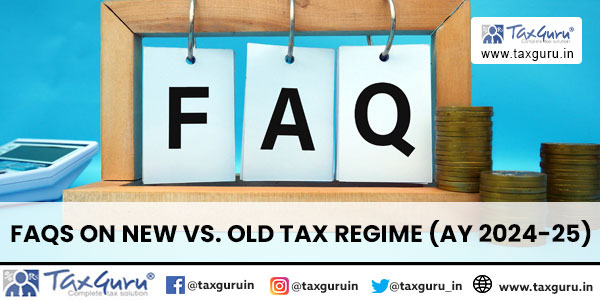Shreesh Chadha
ABSTRACT:
Due to the inevitable advent of technology, the digitalised transactions have increased ten-fold, bringing with it a vast array of issues including taxation. The challenges posed by the procurement and supply of digital services include valuation, nexus, characterization etc. The traditional idea of nexus[1] proved to be inadequate to bring digital transactions by non-residents within the tax bracket of India.
Equalisation Levy was implemented as a stand-alone provision[2],over-riding international treaties, to deal with these situations.
This paper will argue that the introduction of Equalisation Levy was unwarranted, unnecessary and in some ways excessive considering the advancements made in the taxation regime. The 1st part of the paper will analyse what Equalisation Levy is, the 2nd part will get into the criticisms of such taxation, the 3rd part will explain the alternatives which fully cover digital transactions, which will be followed by the conclusion.
Page Contents
1. What is Equalisation Levy?
It was introduced by a notification[3] and is part of the Finance Act, 2016[4]. It mandates a 6% levy to be withheld by residents, as well as non-resident companies utilising permanent establishments in India, for B2B payments by Indian residents to non-resident companies for specified services. These include online advertisements, digital advertising space and any other service which may be notified from time to time by the government.[5]
This can be explained in light of the Google AdWords [6]model. Google AdWords is an online advertising service developed by Google, where advertisers pay to display brief advertising copy, product listings, and video content within the Google ad network to web users. [7]Google India remits the total consideration received from persons wishing to avail Google’s advertising services (example-Rs. 100) to it’s affiliate entity, Google Ireland, after withholding the 6% (Rs. 6) as tax in India. Thus, the amount received by Google Ireland is Rs. 94.
This has been successful in short-term revenue generation, as in 2017-18, digital services’ operators including Google, Twitter, Facebook generated Rs. 560-590 Crores in tax based on equalisation levy.[8] Further, more digital services such as Video On Demand platforms (Netflix, AmazonPrime, Hotstar) might also be brought under the purview of Equalisation levy. [9]
2. Shortcomings of Equalisation Levy:
Avi-Yonah argues that tax should be abundantly regulated, and should be subject to a centralized mechanism since it has a regulatory component i.e. it can steer businesses and persons to act in a certain way. [10] Equalisation Levy is excluded from the Income Tax Act, 1961[11]. It is a stand-alone provision. This creates doubts over it’s legitimacy. There is no cogent reasoning for the differentiation of Income Tax and Equalisation Levy, but the Government maintains that since the power for the both of them flows from different provisions of the Constitution of India[12]
Further, it is a unilateral measure by India, and one of the over-arching principles of taxation is that taxation should be with consent of states and should be effective and fair[13]. This unilateral action undermines international tax cooperation.
Moreover, Article 2 of the OECD DTA Model also does not recognise this type of tax so as to bring it within the purview of international understanding in taxation. This results in a situation wherein a foreign resident company cannot claim set off on the equalisation levy paid in their resident country. This set-off can only be claimed as a right under the DTAA which only recognises tax paid under the Income Tax Act,1961. For example, if Google Ireland has been subject to Equalisation Levy, then it cannot claim set off in terms of corporate tax in Ireland. This naturally creates a hindrance in free trade.
Equalisation Levy is also discriminative, as it is less burdensome on the bigger online advertising platforms rather than the small and medium size platforms. For example, an online platform for advertising services, say XYZ.com will be subject to the same flat rate as Google, whereas the latter because of it’s market position will be able to transfer it’s burden on the business owner who is the consumer. This results in the business costs to avail advertising services from a bigger platform in increasing.
It can also be argued that the equalisation levy creates problems on the international law front. The GATT includes a provision for national treatment, which requires equal treatment of foreigners and residents[14]. Since, Indian digital platforms will be covered by the Income Tax Act,1961 and will be taxed on their net income, the introduction of equalisation levy (without set-off) in terms of digital goods will cast an undue and dissimilar burden on non-resident digital platforms. This challenge was recognised by the Addressing the Tax Challenges of the Digital Economy, Action 1-2015 Final Report by OECD.
3. Existing Jurisprudence:
3.1 Royalties:
The first alternative to equalisation levy, which already existed is Royalties. The concept of ‘royalties’ under the IT Act is at first-glance counterintuitive for it includes products that have intellectual property rights associated but where no such right has been transferred[15]. As a result, payments made in respect of rights where possession or control was not with the payer and there was no territorial nexus in India, have still been held to constitute ‘royalties’ (by both adjudicatory bodies and the legislature). In other words, the language is broad enough to include payment for provision of services, rather than license to the technology or content in itself.[16]
Let us look at it’s application by way of an ITAT ruling in the Google Adwords [17]case. As explained in Part I of the paper, Google India used to collect money from business owners for the digital ad space and send it to Google Ireland. Google Ireland argued that the money received is actually business income, as Google India is performing incidental functions in assisting sales and not actually utilising any Intellectual Property of Google. It was further argued that, Google India was merely a salesman retaining part of the sale proceeds. They argued that since it is business income, what remains to be seen is if Google Ireland has a Permanent Establishment in India, which as per Article 5 of the Indo-Ireland DTAA, required a fixed place of business (maybe a server) which was not there, therefore Google Ireland cannot be taxed in India. The ITAT rejected this argument, based on the wide ambit of “royalties” in India. They ruled that since what is being utilised is the online space for advertisement, by profiling users of Google (age, location etc.) through intellectual property rights and know-how, the money sent by Google India to Google Ireland is actually “royalty” and not “business income”.
The existing jurisprudence in terms of “Royalty” under the IT Act was enough to cover even other digital transactions. Take for example, Apple Music or Spotify, which are online music streaming services not residents of India. They utilise the subscription model wherein the platforms provide audio OTT (over the top) services based on a fixed periodic subscription fee, as its main revenue generator. All music files reside on the cloud or are encrypted to the music app. Payment of subscription fees allows the user unlimited; and in some cases, offline, access to songs.[18] In the case of DIT v. Globus Stores[19] it was held that revenue generated from offering of subscription services in India were taxable as royalties, under both the IT Act and treaty framework.
Therefore, for online advertisements, online streaming services the jurisprudence already existed in case of non-resident companies which could bring them under the statutory authority of IT Act by way of characterising income remitted abroad as “royalties”.
3.2 IGST Act, 2017
There also exists parallelly in the realm of Indirect Tax, a remedy to make non-resident online companies pay the exchequer.
The Integrated GST Act, 2017, contains a definition of ‘online information and database access or retrieval (OIDAR)’ services. This definition covers a wide gamut of internet based services such as advertising, cloud services, providing e-books, providing data or information and even providing entertainment including movies, shows etc. [20]
Thus, non-resident companies such as Kindle, Netflix, AmazonPrime, etc. are covered by the IGST Act.
The Act mandates B2C revenue models (such as Netflix) to register under the GST regime and pay the requisite tax, and for B2B revenue models (such as Google Adwords) , the recipient of the services located in India would pay the tax under a reverse charge mechanism. Hence, there was some semblance to a holistic, all encompassing tax net. [21]
Since, Equalisation Levy is also not direct tax, by way of income tax and is more of a flat tax to be withheld, it can be argued that the IGST Act could have been looked as a more natural way to tax digital transactions.
3.3 Significant Economic Presence
Along with Equalisation levy, another concept that was brought up in the BEPS Action Plan 1 Report n E-Commerce Taxation was that of Significant Economic Presence (SEP).
The Income Tax Act also includes SEP in S. 9 to mean business connection in India if – the revenue of a non-resident in India exceeds prescribed amount, if the business is solicited through digital means or if the non-resident engages with the user by digital means. The basic purport is that the end user should be Indian, for business connection by way of SEP to follow.[22]
What the inclusion of SEP in the IT Act does is that it fills the gap created by E-Commerce Transactions. The world has moved beyond the traditional brick and mortar understanding of fixed places of business, but the DTAA’s that were entered into by India are yet to evolve to keep up with the growing and unpredictable market of digital transactions. What SEP does is provide a holistic answer to the question of pinning down income earned in India by a non-resident through digital means, whereas Equalisation Levy is more of a short term, interim relief to Indian Tax Authorities as it only applies to certain activities which fall outside the tax net, and this net needs constant updating.
SEP also paves the way for international cooperation in taxation which the unilateral approach of Equalisation Levy cannot render.
Conclusion:
This paper in no way argues that the current tax model would be perfect without Equalisation Levy.
Even the system of SEP has it’s criticisms with regards to implementation as one transaction can be broken down to different transactions and it may be a challenge to attribute one particular part as Indian income. Similarly, in Elsevier Information Systems GmBH case, fee from subscription to online databases was held to be neither “royalty” nor “fee from technical services” as the information was merely accessed based on a subscription.[23]
What the arguments made in this paper try to show, is that hasty action based on maximum revenue collection is not the way to receive a smooth taxation system. In India, there are multiple authorities, the AAR, the CIT, the ITAT and in addition even the High Court and Supreme Court, and everyday new cases prop up which are adjudicated for years. And there is no contention to the fact that “zero tax religion” and tax avoidance is here to stay. However, well thought out, and accessible taxation methods will provide a clearer picture, for honest tax payers who have to go through the rigmarole of new hit & trial methods such as equalisation levy.
Moreover, recently the Corporate Tax Rates were slashed to 22% from 30% for existing companies and 15% from 25% to encourage new investments. Regardless of this slash, what is the Equalisation Levy trying to equalise? A 6% withheld tax would mean nothing in front of a wider holistic tax net bringing in 22%-15% revenue. [24]
With newer technologies such as blockchain, virtual reality and artificial intelligence on the rise, the pace of digitalization is only going to accelerate. Any new legislative enactment must be fully considered, and its broader impact fully evaluated, before being implemented. A unilateral move such as equalisation levy can only expose India to retaliatory measures from other countries. As the OECD works towards a solution towards digital taxation, India’s interests will be better served if it works through developing a consensus-based, longer-term, multilateral solution to digital taxation.
**************************************************
Notes:-
[1] Permanent Establishment- in DTAA’s and Domestic Law.
[2] It is not part of the Income Tax Act, 1961.
[3] Notification no. 37/2016: F.NO. 370142/12/2016-TPL
[4] S. 163-S. 177, Finance Act, 2016.
[5] S. 165, Finance Act,2016.
[6] This was also the subject of an ITAT ruling, which is discussed later in the paper.
[7] https://www.leadsquared.com/what-is-google-adwords/
[8] https://economictimes.indiatimes.com/tech/internet/google-and-other-digital-service-providers-generate-over-rs-560-cr-in-equalisation-levy/articleshow/63933584.cms?from=mdr
[9] https://www.financialexpress.com/budget/equalisation-levy-more-digital-services-in-budget-net/993816/
[10] Avi-Yonah, Reuven S. “The Three Goals of Taxation.” Tax L. Rev. 60, no. 1 (2006): Pg 3.
[11] S. 10 (50), Income Tax Act,1961.
[12] IT Act- Entry 82, 7th Schedule, Equalisation Levy- Entry 97, 7th Schedule of the Constitution.
[13] Chapter-2, Addressing the tax challenges of the digital economy © OECD 2014
[14] Article III, GATT.
[15] S. 9 (1) (vi), Income Tax Act.
[16] Shreya Rao and Sriram Govind, ‘Taxation of e-commerce in India’ [2016] taxmann.com
[17] IT(TP)A.1511 to 1516/Bang/2013
[18] Deloitte, ‘Audio OTT economy in India – Inflection point’ (February 2019), Pg. 21 <http://indianmi.org/be/wpcontent/uploads/2019/02/Audio-OTT-Economy-in-India_Final-web-v2.pdf>.
[19] [2013] 140 ITD 103.
[20] PWC, “Video on Demand-Entertainment Reimagined” December 2016, Pg 32.
[21] Ibid.
[22] S.9 (1) (i) Explanation 2A,Income Tax Act, 1961.
[23] ITA No. 1683/Mum./2015] – ITAT Mumbai/ MANU/IU/0441/2019.
[24] https://www.thehindubusinessline.com/economy/fm-slashes-corporate-tax-rate-heres-what-it-means-for-india-inc/article29466477.ece
**Shreesh Chadha is a 5th Year Law Student at Jindal Global Law School, Sonipat**

























